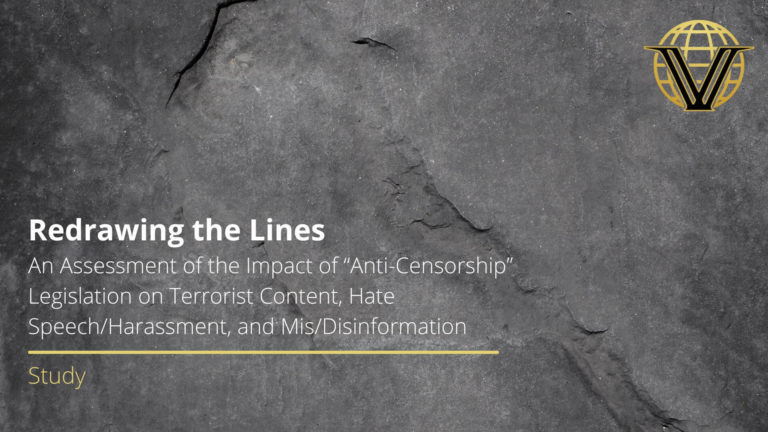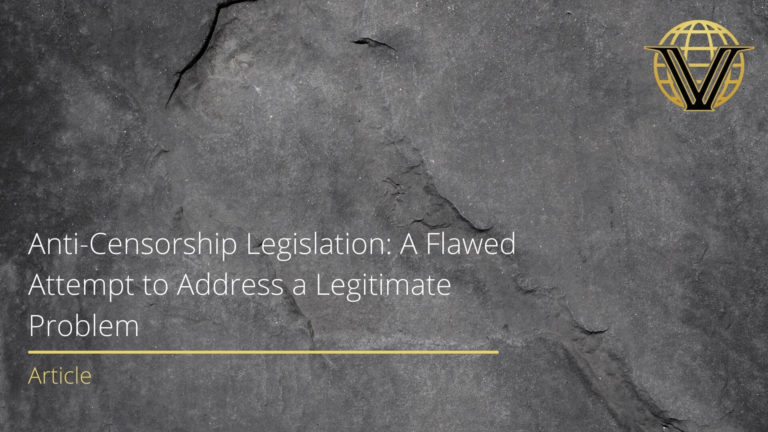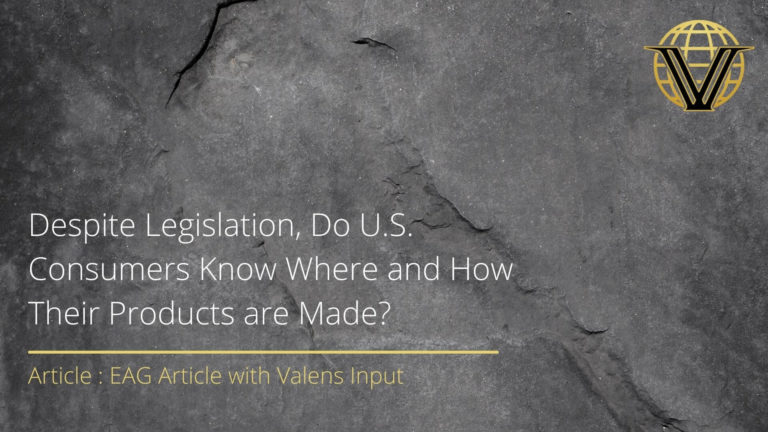Daveed Gartenstein-Ross, Colin Clarke, and Samuel Hodgson
International Centre for Counter-Terrorism – The Hague
White supremacist extremists travel across the border between the United States and Canada to perpetrate violent attacks, spread propaganda, recruit, and network. This cross-border activity threatens to strengthen extremist movements in both countries.
In January 2020, the FBI arrested three members of the white supremacist extremist (WSE) group The Base for plotting an attack during a gun rights rally in Richmond, Virginia. The Base is a transnational accelerationist group that advocates for the overthrow of the U.S. government in a violent race war. The group’s members have met in secret across the United States to engage in paramilitary training and plot attacks against civilians and law enforcement. Among the members arrested in January 2020 was former Canadian Forces reservist Patrik Mathews, who illegally entered the United States in August 2019 after Canadian authorities raided his home in the province of Manitoba. Mathews was previously lawfully admitted to the United States from Canada multiple times, but clandestinely violated his status of admission by participating in paramilitary training with The Base during his trips.
Mathews is the most prominent example of WSE-linked travel across the U.S.-Canada border, and his case demonstrates the potential threat posed by WSE travellers between the two countries. Though there have only been a handful of publicly known cases of WSE-linked travel between the United States and Canada, these cases provide strategic insights relevant to border security and travel patterns within the WSE movement between these two countries. This Perspective discusses specific linkages between WSEs in the United States and Canada and highlights key open-cases of WSE cross-border travel before assessing the strategic implications of this issue. Cross-border activity by WSEs can fuel violent extremist activity in both countries, and is a vulnerability that is often underreported in the media, and overlooked by policymakers.
Linkages between the WSE Movement in Canada and the United States
The WSE movement in Canada is deeply connected to its fellow travellers in the United States by ideology, organisational ties, and a shared history of perpetuating racial discrimination. Canadian and U.S. residents are among the most active members of internet forums and message boards connected with WSE activity, including Iron March and the Daily Stormer. For these reasons, several violent WSE groups can claim members on both sides of the U.S.-Canada border.
The most salient of these groups are The Base and Atomwaffen Division (aka the National Socialist Order), both of which Canada designated as terrorist groups in February 2021. Both groups have been weakened by a series of arrests in the United States targeting their leadership and members over the past year. In Canada, Atomwaffen reportedly has members in British Columbia, Ontario, and Nova Scotia, while The Base reportedly has members, or has sought to recruit them, in Manitoba, Saskatchewan, Ontario, and on Canada’s East Coast. Atomwaffen has had members throughout the United States, with the group’s largest chapters being publicly identified as centred in Virginia, Texas and Washington State. Both groups have held paramilitary training camps—dubbed “hate camps” by the groups sponsoring them—in the United States that bring together geographically disparate members to meet in person, exchange weapons skills, create propaganda, and potentially engage in secure planning for sensitive group operations.
Canada is also home to several other WSE groups with transnational connections. A number of prominent transnational skinhead groups have a presence in Canada, including Blood & Honour and Combat 18, both of which Canada designated as terrorist groups in June 2019. The Hammerskins, a U.S.-based WSE skinhead network notable for its emphasis on brawling, also has a Canadian chapter.
WSEs have perpetrated fewer major attacks in Canada than they have in the United States. Canada’s most notable attack that could be categorised as WSE occurred in 2017, when university student Alexandre Bissonnette opened fire in a Quebec City mosque, killing six people. Bissonnette appears to have been motivated by anti-Muslim and anti-refugee sentiment, and had accessed various websites linked to U.S.-based WSEs, including that of Dylann Roof, who opened fire on a Bible study in a historic black church in Charleston, South Carolina in 2015, killing nine.
Cross-Border Travel Linked to Violence and Criminal Activity
Public sources reveal sporadic instances of individuals linked to transnational WSE groups crossing the U.S.-Canada border, including for the explicit purpose of violent or criminal activity. In recent years, the most notable cases of WSE travel across the U.S.-Canada border have been associated with Atomwaffen and The Base, whose members have been documented crossing in both directions. Individuals without close affiliation with notable transnational groups have also travelled across the border in connection with violent activities.
Travel Linked to Transnational Groups
In, and potentially before, 2019, The Base member and recruiter Patrik Mathews travelled to the United States multiple times to attend hate camps. At one point, he was reportedly denied entry, and Canadian officials initiated an investigation into him after discovering “racist material” in his truck on a separate return trip. Following Mathews being denied entry at the border, The Base reportedly determined that it was risky for Canadian members to continue travelling to camps in the United States, and expressed an intention to hold similar events in Canada, which could signal a possible future trend.
Canadian authorities raided Mathews’ home in August 2019 and he was subsequently discharged from the Canadian Armed Forces. After the raid, Mathews abandoned his vehicle near Piney, Manitoba, before fleeing across the border illegally between Minnesota and Manitoba. Two Maryland members of The Base met Mathews in Michigan and he spent the next several months in various locations, including in Virginia, Georgia, and Delaware, often at property owned or rented by group members. In the fall of 2019, Mathews allegedly provided training to other members of The Base at a hate camp. Beginning in November 2019, Mathews and the two Maryland members acquired weapons and plotted to launch an attack during a January 2020 gun rights rally in Richmond, Virginia. Federal law enforcement arrested the trio in January 2020 before they could execute their plot.
There are several other examples of WSE travel across the U.S.-Canadian border. At various times until the spring of 2019, Kaleb Cole—a resident of Blaine, Washington and the leader of one of Atomwaffen’s largest cells—drove to and from British Columbia, reportedly as frequently as multiple times a week. Canadian authorities eventually detained and deported him in the summer of 2019 (after he boarded a domestic flight in Canada) due to his involvement in “an organization that may engage in terrorism.” Cole claimed that he had travelled to British Columbia to visit his girlfriend, but members of Atomwaffen have reportedly operated in the province. Demonstrating the transnational nature of the network with which he was affiliated, Cole had previously travelled to Ukraine, Poland, and the Czech Republic with at least one other member of Atomwaffen. He attended a white power music festival in Kyiv.
On an unknown date, a leading Canadian Atomwaffen propagandist with the online handle “Dark Foreigner” reportedly travelled from his residence in Ontario to at least one hate camp in the United States. Though Dark Foreigner is a prominent figure in Atomwaffen, further details of this travel are unavailable in open sources.
Travel by Unaffiliated Individuals
There are a number of high-profile cases of travel by individuals not linked to established white supremacist extremist organisations, but who have still expressed WSE beliefs and been implicated in WSE-linked plots. Several of these are detailed below. These incidents demonstrate the magnitude of the challenge in attempting to combat both individuals affiliated and unaffiliated with formal extremist groups.
In October 2019, an unnamed Canadian citizen attempted to cross into the United States at the Ambassador Bridge port of entry between Windsor, Ontario and Detroit, Michigan in connection with a neo-Nazi plot against electrical infrastructure in the south-eastern United States. U.S. Customs and Border Protection officers found WSE propaganda evocative of Atomwaffen Division on his cell phone and believed he may have been part of a cell plotting an attack, though he claimed the purpose of his travel was to visit friends in Tennessee and Ohio. Later investigation revealed that he had sought to join a budding neo-Nazi organisation that was plotting to attack electrical infrastructure using firearms.
In February 2015, Canadian authorities arrested U.S. resident Lindsay Souvannarath for plotting to carry out a mass shooting in a Halifax mall with two Canadian co-conspirators. Souvannarath travelled by air from Chicago O’Hare International Airport to Halifax Stanfield International Airport, where she was stopped by the Canada Border Services Agency and identified as a likely match for a national lookout issued by Halifax Regional Police in relation to a plot. Souvannarath, who was motivated by a desire to emulate the perpetrators of the infamous 1999 shooting at Columbine High School, was likely an active member on the neo-Nazi forum Iron March, and was indoctrinated into WSE ideology by the forum’s founder Alexander Slavros.
In 2011, dual Canadian-American citizen Craig Cobb fled from Canada to the United States after Canadian authorities issued legal charges against him for running a hateful video-sharing site that “most often targeted the Jewish and black population, but also espoused vitriol against gays and lesbians.” Canadian authorities contacted U.S. law enforcement but Cobb was likely able to escape extradition because the crime with which he was charged, wilful promotion of hatred, does not have a clear equivalent in the United States. After entering the United States, Cobb tried to establish a whites-only community in Leith, North Dakota, which attracted visitors prominent in the U.S. white supremacist community, including National Socialist Movement leader Jeff Schoep. Cobb was charged with seven felony counts “for scaring residents while patrolling Leith with a gun” and ultimately reached a plea deal with prosecutors.
These incidents are emblematic of the nature of the threat. If WSEs grow more decentralised over time, it will become more difficult to identify and thus counter their travel back and forth across the U.S.-Canadian border. As COVID-related travel restrictions loosen, the number of WSEs seeking to travel between the U.S. and Canada on a regular basis could increase. Data from the Center for Strategic & International Studies suggests that in 2020, WSEs and like-minded extremists were responsible for two-thirds of domestic terrorist plots and attacks in the United States. In light of the events of January 6, 2021, many experts expect this trend to continue or even grow.
Cross-Border Travel Linked to Political Events and Entertainment
Political and entertainment events associated with white identity politics in the United States have attracted Canadian attendees. The majority of such events have not been held or planned in direct conjunction with violent or criminal activity, and many individuals who are not extremists have travelled to attend them. However, extremists and notable white supremacist ideologues have crossed the border to participate in these events, and violence has occasionally occurred.
In August 2017, a small number of Canadians attended the Unite the Right rally in Charlottesville, Virginia, which devolved into violent street-fighting and resulted in one death after a WSE drove his car into a group of counter-protesters. Messages exchanged in advance of their departure indicate that they were aware of the potential for street fighting and considered bringing shields and other “protective gear.” However, they chose not to bring such items with them in order to avoid drawing authorities’ attention while crossing the border. The most notable Canadian to attend the rally was Gabriel Sohier Chaput, who has been highly influential in the North American and broader Anglophone white supremacist community, promoting WSE ideology and contributing to major white supremacist internet forums under the name Zeiger. Sohier Chaput has since been charged in Canada with wilfully promoting hatred against an identifiable group. After a warrant was issued for his arrest, he disappeared for more than two years. In late November 2020, he finally appeared in a Montreal court to face the charges against him.
Canadian white nationalist Paul Fromm has been a popular speaker at a variety of private conferences hosted by WSE groups in the United States, including events in 2013 and 2015 sponsored by the Knights of the Ku Klux Klan, the Golden State Skins, and Blood & Honour.
Canadian residents have been documented attending previous iterations of Hammerfest, an annual music festival hosted by the WSE skinhead network Hammerskins, including the 2016 festival near Temple, Georgia and the 2018 festival near San Diego, California. Hammerskins concerts and festivals, particularly large events like Hammerfest, have frequently been sites of violence and criminal activity, often between group members. This is another area that could again draw WSEs in a post-COVID environment, with WSEs eager to attend in-person gatherings, such as concerts and other large-scale events.
Strategic Implications
These cases of WSE-linked travel between the United States and Canada identified in open sources highlight several potential strategic implications for border security.
First, with or without affiliation to transnational groups, WSEs cross the U.S.-Canada border to perpetrate, plan, or train for acts of violence. Transnational groups like The Base and Atomwaffen, with members on both sides of the border, benefit from cross-border travel for planning purposes, as in-person meetings offer an opportunity for geographically disparate members to plan activities that are too risky to discuss over more easily monitored electronic communications channels. They also offer WSEs an opportunity to vet each other in person. Given the attention focused on WSEs by law enforcement, extremists are more concerned than ever about the possibility of infiltration by government agents. Moreover, since several of these groups have now been proscribed in Canada, it could lead them to take operational security even more seriously, driving the movement further underground.
Second, WSEs cross the border to spread their ideology, recruit, and organise. Cross-border travel by members of transnational WSE groups, as well as by unaffiliated individuals attending political rallies, conferences, or entertainment events linked to WSEs, may not have a direct connection to violence or violent intent. However, such travel can promote WSE radicalisation and recruitment, and help build rapport between members, as well as facilitate the exchange of violent ideologies, tactics, and material support throughout North America.
Third, WSE travel across the U.S.-Canada border has occurred in both directions, most often via land borders. However, WSE-linked travel between the two countries is currently more likely to occur from Canada to the United States, as transnational groups often have a larger U.S. membership and seemingly hold more trainings in the United States. If groups begin holding hate camps in Canada, as members of The Base and Atomwaffen have proposed, fewer Canadians may risk the trip into the United States, and more U.S.-based WSEs could potentially seek to travel to Canada.
Fourth and finally, WSEs facing criminal prosecution in Canada, or those under investigation by Canadian law enforcement, may cross the border to seek shelter with compatriots in the United States. Those with strong ties to transnational groups may be most likely to do so, particularly if they already have U.S.-based contacts or have previously crossed the border to meet their foreign compatriots. WSEs may be more likely to travel across the border to pursue shelter from law enforcement when their group has acquired property or created a community to use as a base of operations, particularly in areas near the border. Members of The Base made plans or expressed a desire to create such communities in both Canada and the United States. At least one was intended to be at a property in Bad Axe in Michigan’s Upper Peninsula. The Base’s leader also purchased property for the group’s use near Republic, Washington.
The existence of a cross-border relationship between individuals in the WSE movement is a concern for policymakers in both Canada and the United States. If the Canada-U.S. border is viewed as permeable, extremists could be encouraged to travel from even further white supremacist hot spots to North America, traveling to Canada before continuing a journey to the United States. WSEs could also try to identify seams and exploit differences in laws or policies between Canada and the U.S. that make recruiting, financing, or spreading propaganda a less risky proposition. Finally, extremists may pursue opportunities to perpetrate violence on the opposite side of the border.
About the authors
Daveed Gartenstein-Ross is the founder and chief executive officer of Valens Global, an Associate Fellow at ICCT – The Hague, and an internationally recognised authority on terrorism and sub-state violence who is the author or volume editor of over 25 books and monographs.
Colin P. Clarke is the director of policy and research at The Soufan Group and an Associate Fellow at ICCT-The Hague.
Samuel Hodgson is an analyst at Valens Global who specialises in the study of domestic violent extremist groups, including the white supremacist extremist movement.



